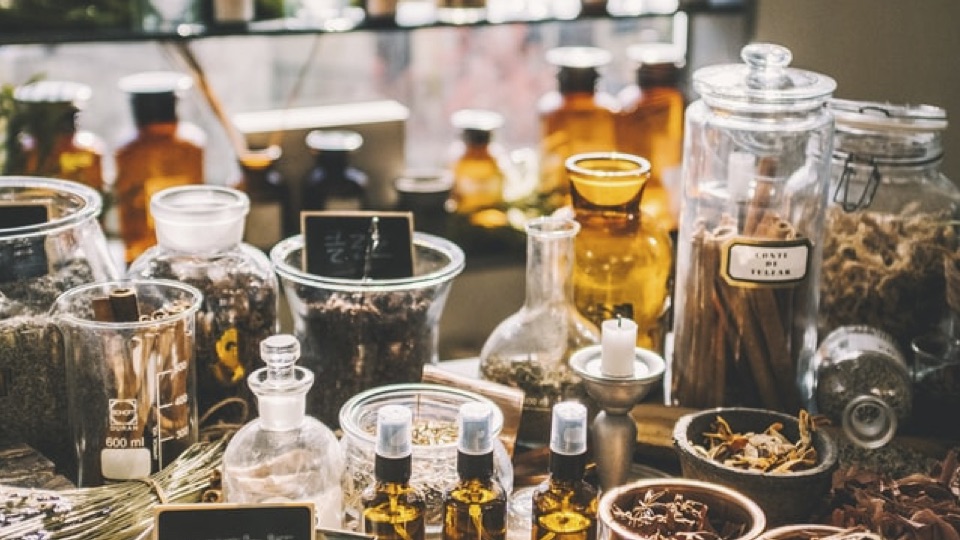TCM, or Traditional Chinese Medicine, has been used for thousands of years. Only today is it starting to slowly be accepted by Western medicine as an alternative to prescription drugs. The Chinese believe that the mind and body are strongly connected, thus medicine or treatments are prescribed based on that concept. TCM also carries the belief that all our organs support each other. It’s a conscious effort to better yourself physically, spiritually, and emotionally … from the inside out. In a way, this ancient Chinese way of thinking is the original “self-care.”
Rather than splurging on an expensive spa treatment, TCM is a more authentic way to connect to yourself and heal inwardly. Unlike the Western concept which is all about “fixing” a symptom of an illness, Eastern healing is based on the idea of maintaining and improving your overall health as prevention against disease. While the West goes for the quick fix, the East strives to get to the root of the problem.
Herbs, acupuncture, massage, “cupping,” and tai chi are common aspects of TCM. All these measures will help you fix your Qi (pronounced, “kee”) or the force of life that runs through the body. Ideally, your own Qi contains balanced levels of yin (passive energy) and yang (active energy.) Outside forces like stress can alter this balance drastically. An imbalanced Qi will cause illness. Consider these treatments to feel more “connected” to your personal Qi.
Acupuncture: Acupuncture involves inserting delicate, thin needles into the skin to manipulate muscle and skin tissue. Even though it can make you feel like a pincushion, there’s practically no pain at all; the needles are only inserted very superficially. This process triggers the body’s natural painkillers. The needles also stimulate up to 2,000 points that run along our 12 “meridians,” or the energy channels that transfer Qi to internal organs. Acupuncture can loosen “stuck” energy and make healthy Qi flow more freely. Acupuncture has successfully been used to treat pain, infertility, depression, and more.
Herbs: If you’re not ready for physical measures, Chinese herbs can be gradually introduced into a routine (always consult an expert first). Using leaves, roots, and seeds, plus common herbs like ginger and ginseng, can lower the amount of damaging free radicals in the body that can cause disease. Herbs can provide natural energy, help insomnia, improve appetite issues, and much more. Our favorite method of ingestion is via a steamy cup of tea, which has healing powers in itself.
Tui Na Massage: This is not your average spa massage with light pressure and decadent oils; it’s believed to be the oldest form of bodywork on the planet. “Tui Na” uses intense massage pressure, so discuss your pain threshold beforehand. Like acupuncture, the treatment stimulates energy points using fingers instead of needles. The body is moved through poses, and the massage is usually performed clothed.
Tai Chi: Super-intense massage isn’t quite your speed? Consider Tai Chi, a form of meditation that’s done while moving. This slow-motion, low impact exercise can be done by anyone and is based on a series of animal stances. Tai Chi has been lauded for its healing properties and the ability to improve balance.
Cupping: You’ve probably seen the intense bruising that cupping leaves, but it looks much worse than it feels. A bit of cotton is lit on fire and placed inside a plastic or glass cup. These heated cups are suctioned onto the skin. This process sucks out oxygen, and after the air inside cools, a vacuum is created that creates pressure. Cupping is commonly done by athletes or people who frequently suffer from sore muscles.
If you’re considering trying TCM, always find a seasoned practitioner to complete any treatments you’re thinking about.
-Naima Karp
Photo by Bundo Kim on Unsplash



0 comments on “Traditional Chinese Medicine 101”